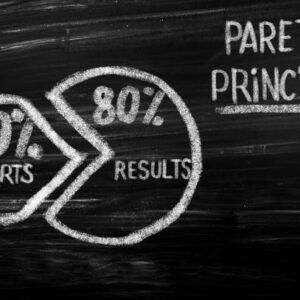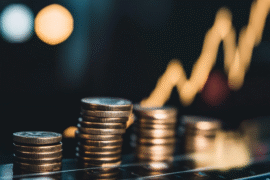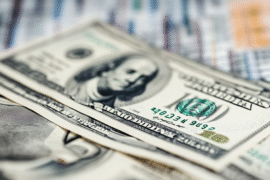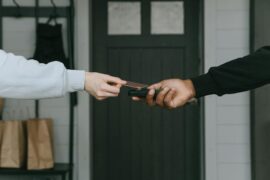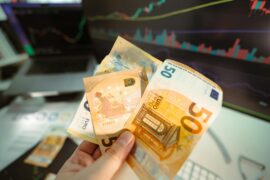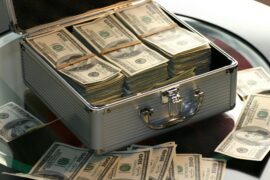This article may contain references to products or services from one or more of our advertisers or partners. We may receive compensation when you click on links to those products or services. Nonetheless, our opinions are our own.
- Key Highlights
- Introduction
- Understanding $1 Silver Certificates
- The Historical Significance of Silver Certificates
- Conclusion
- Frequently Asked Questions
- Recommended Reads
Key Highlights
- $1 Silver Certificates were issued between 1878 and 1964. They could be exchanged for silver dollars in the past, but now they are out of use, even though they are still legal money.
- Their worth for collectors depends on several things. These include the item’s condition, how rare it is, the series it belongs to, and special features like star notes or printing mistakes.
- Common certificates might sell for a little more than their face value, but rare ones can be much more valuable, especially if they are in great condition.
- If you want to buy or sell them, you need to do your homework. This means understanding grading systems and knowing good dealers or auction sites.
- This guide helps you understand everything about $1 Silver Certificates, from their history to how to make the most money off them.
Introduction
For many years, the silver dollar was a symbol of the United States’ money system. Over time, it changed from real silver to paper money called $1 Silver Certificates. These certificates let people use paper instead of silver for buying things. This shows part of America’s economic history. Today, collectors care about these certificates for their history and as a way to invest.
Understanding $1 Silver Certificates
$1 Silver Certificates started in 1878 because people wanted money backed by silver. At first, you could exchange them for silver dollars and for a short time, silver bars. The U.S. Bureau of Engraving and Printing made these certificates with fine details and safety features to stop fake ones.
Even though you can’t trade them for silver anymore, $1 Silver Certificates are still accepted as money in the United States. Their value for collectors is often higher than what they are worth on paper. Today, these certificates are important reminders of an earlier time in American money history. Many collectors want them because of their historical value.
The Historical Significance of Silver Certificates
The story of $1 Silver Certificates is connected to shifts in the silver market and U.S. money rules. The U.S. Treasury introduced these certificates in 1878 by the Bland-Allison Act. This was a time when people were discussing the gold standard and the need for more silver coins.
These certificates became popular because they were an easy option instead of carrying heavy silver dollars. As time passed, their designs changed to show new ideas about silver backing and the growth of U.S. money. A standout type, known as star notes, had a star in their serial numbers and became very collectible.
Production of Silver Certificates stopped in 1964 because silver prices went up and silver supplies went down. Still, millions exist today, and each one is a part of American history.
The Transition from Silver to Paper
The $1 Silver Certificate design changed several times over the years. These changes showed how the economy of the nation was changing. The first large notes had different designs and portraits. Then, in 1928, small notes came out. They displayed the well-known portrait of George Washington.
During World War II, the U.S. made “yellow seal” emergency money. It had a yellow Treasury seal. These notes were made for certain areas and could lose value in wartime. This series shows how U.S. money changed based on historical events.
$1 Silver Certificates can’t be traded for silver anymore, but they still keep their face value. Collectors value them for their history and art in U.S. money design.
Identifying Your $1 Silver Certificates
Knowing the main features of $1 Silver Certificates is important for collectors and people who discover them in old family items. Special marks and visual differences help tell these certificates apart from other banknotes from that time.
Key Features to Look Out For
A key part of a $1 Silver Certificate is the words “Silver Certificate” on the front. This makes it different from regular U.S. money. These certificates clearly say that they could be exchanged for silver. The text reads, “One Dollar in Silver Payable to the Bearer on Demand.”
Looking at the back of the certificate can give you useful information. The design changes based on the year it was issued. It often shows the Great Seal of the United States, which means it is supported by the government.
Other key identifying factors include:
- Serial Numbers: Special patterns, like repeated digits or numbers in a row, can raise a certificate’s value.
- Star Notes: Certificates that have a star in the serial number are replacements. This makes them less common and more valuable.
- “E Pluribus Unum”: This phrase means “Out of many, one.” It shows up on many Silver Certificates to represent national unity.
- Signatures: The signatures of the United States Treasurer and the person in charge of the Treasury help date and sort certificates.
Deciphering Series and Serial Numbers
Understanding the series and serial number of a $1 Silver Certificate is important for figuring out how rare it is and what it might be worth. The series year usually shows big design changes instead of the year it was actually printed.
For example, large notes from earlier times had different designs and pictures. In contrast, small notes, which came out in 1928, always showed George Washington. The letter that comes after the series year (like 1935E or 1957B) demonstrates the different types within that series. This can change the value.
Using good online sources and collector guides can help you understand the series and serial numbers of your certificate.
Valuing Your $1 Silver Certificates
To find out how much a $1 Silver Certificate is worth, you need to look at things like its condition, rarity, and series. Common certificates might be worth a little more than face value. However, rare ones can be worth a lot more.
Factors Impacting Value: Condition, Rarity, and Series
Collectors use grading systems to check a certificate’s condition. Higher grades mean more value. Rarity is also very important. Certificates that are part of limited print runs, have unique serial number patterns, or belong to special series like the 1935A experimental note are usually worth more.
Below is a general estimate of how condition and rarity affect value:
| Condition | Common Series | Rare Series |
|---|---|---|
| Poor | Face Value | $5 – $50+ |
| Good | $1 – $3+ | $10 – $100+ |
| Very Good | $3 – $10+ | $50 – $500+ |
| Fine | $5 – $20+ | $100 – $1,000+ |
| Very Fine | $10 – $50+ | $500+ |
Actual values can change depending on market demand. It is a good idea to check price guides and get expert opinions for the right valuations.
How to Use Online Price Guides and Resources
Many online resources can help you find the value of $1 Silver Certificates. Trusted auction sites like Heritage Auctions and Stack’s Bowers Galleries show past sales data. These sites give you helpful information about pricing trends.
Websites like PCGS (Professional Coin Grading Service) and NGC (Numismatic Guaranty Corporation) provide clear pricing guides and help verify certificates.
Preparing to Buy or Sell
Whether you are buying or selling $1 Silver Certificates, being ready is important. Buyers should make a budget and look into different series. Sellers should check the condition and prove their certificates are real before putting them up for sale.
Essential Tools and Resources for Beginners
- Books: “Paper Money of the United States” by Arthur and Ira Friedberg is a complete guide.
- Online Forums: Joining collector groups can give good insights.
- Grading Services: Getting help from PCGS or NGC can prove and raise a certificate’s value.
Conclusion
Knowing the history, worth, and main qualities of $1 Silver Certificates helps both buyers and sellers to make good choices. By using good methods, checking if it is real, and working with trusted dealers, you can feel sure about dealing with silver certificates.
Frequently Asked Questions
What Makes a $1 Silver Certificate Valuable?
Many things affect the value of a $1 Silver Certificate. These include how rare it is, which is decided by its series and serial number, its condition, and if it has special features like star notes. Even though they are still legal tender, their value to collectors is often higher than their face value.
How Can I Tell if My Silver Certificate is Authentic?
Authentic $1 Silver Certificates have unique security features. These include microprinting, red and blue security fibers, and watermarks. To check if your certificate is real, compare it with pictures from reliable sources or talk to an expert for help.
Are Online Appraisals Reliable for Valuing $1 Silver Certificates?
Online price guides and auction records can help you get a general idea of silver certificates’ values. However, you should use them carefully. For a complete appraisal, it is best to talk to a trusted expert in numismatics who specializes in silver certificates.

Reviewed and edited by Albert Fang.
See a typo or want to suggest an edit/revision to the content? Use the contact us form to provide feedback.
At FangWallet, we value editorial integrity and open collaboration in curating quality content for readers to enjoy. Much appreciated for the assist.
Did you like our article and find it insightful? We encourage sharing the article link with family and friends to benefit as well - better yet, sharing on social media. Thank you for the support! 🍉
Article Title: Where to Buy and Sell Silver Certificates for the Best Prices
https://fangwallet.com/2025/03/07/1-silver-certificates/The FangWallet Promise
FangWallet is an editorially independent resource - founded on breaking down challenging financial concepts for anyone to understand since 2014. While we adhere to editorial integrity, note that this post may contain references to products from our partners.
The FangWallet promise is always to have your best interest in mind and be transparent and honest about the financial picture.
Become an Insider

Subscribe to get a free daily budget planner printable to help get your money on track!
Make passive money the right way. No spam.
Editorial Disclaimer: The editorial content on this page is not provided by any of the companies mentioned. The opinions expressed here are the author's alone.
The content of this website is for informational purposes only and does not represent investment advice, or an offer or solicitation to buy or sell any security, investment, or product. Investors are encouraged to do their own due diligence, and, if necessary, consult professional advising before making any investment decisions. Investing involves a high degree of risk, and financial losses may occur including the potential loss of principal.
Source Citation References:
+ Inspo
There are no additional citations or references to note for this article at this time.

